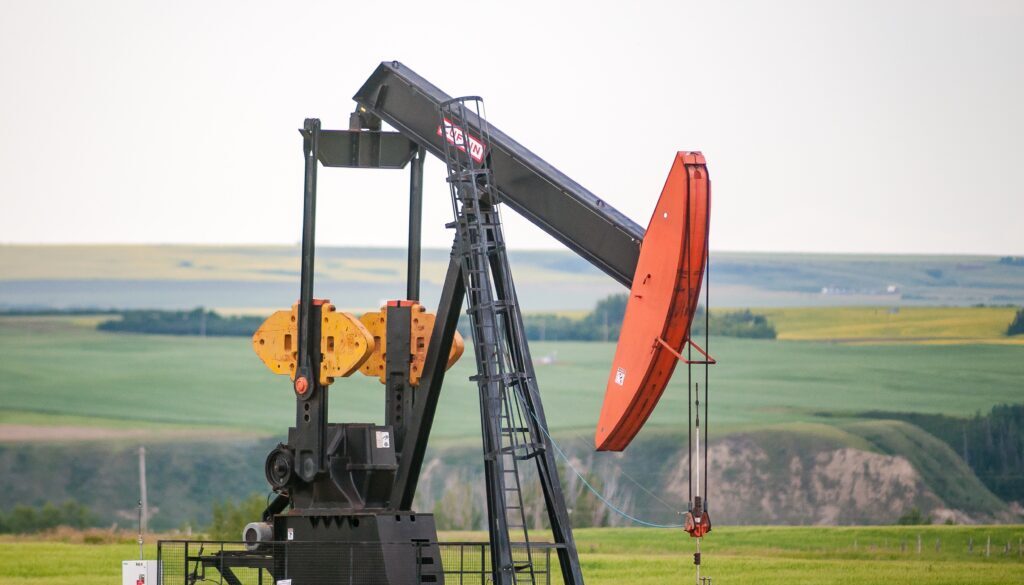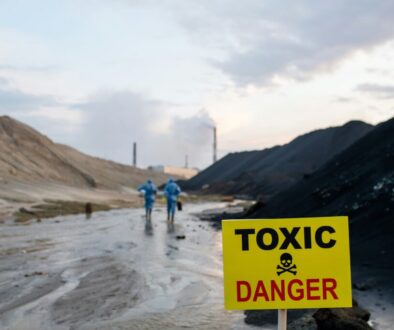Postcard from California: Idle oil wells threaten health, climate and will cost billions to plug
Last June, at commencement ceremonies in the small, heavily Latino town of Arvin, Calif., proud graduates threw their caps in the air. But those gathered at the Arvin High School football field didn’t know there was something else in the air: potentially explosive levels of noxious methane gas leaking from an idle oil well only 400 feet away.
A week before, state inspectors had found that 27 idle wells around Arvin were leaking methane, the main constituent of so-called “natural” gas. More than half – including the well near the football field, which hadn’t produced oil since 1979 – were spewing concentrations of the combustible, colorless, odorless gas. But the community wasn’t told about the leaks until a meeting almost two weeks after graduation.
State regulators’ “woeful lack of enforcement led to the inevitable leaks in our neighborhoods that our communities have warned about for years,” Cesar Aguirre, an organizer with the Central California Environmental Justice Network, said in a press release. He said officials “callously told residents . . . not to worry, leaving them feeling defenseless and willfully put in harm’s way.”
Arvin is in Kern County, the center of California’s oil industry. But idled and leaking oil and gas wells are a statewide crisis whose scope – and the looming cost of closing them – is mind-boggling:
- California has more than 35,000 idle wells – wells not in use for at least two years, but not properly plugged and closed – according to the state Geologic Energy Management Division, known as CalGEM. Scientists from Stanford University and the University of California estimate that two-thirds of idle wells are leaking.
- A study for CalGEM by the California Council on Science and Technology (CCST) estimated that more than 5,500 wells are not only idle but may be “orphaned”: Their operators have gone bankrupt and walked away, leaving no one responsible for maintaining or plugging them. The group warned an additional 69,425 wells were in danger of becoming orphaned in the future.
- A report last year by the nonprofit Carbon Tracker Initiative estimated the cost to plug and clean up California’s current and future idle and orphan wells at $13.2 billion to $21.5 billion.
Nationwide, the problem is even more staggering: Last year, researchers at the American Association for the Advancement of Science estimated there are up to 3 million unplugged idle wells, and more than 100,000 orphan wells, across the country.
Methane is not classified as a toxic air pollutant, but people living near leaking wells often report nosebleeds, headaches and respiratory problems. Other toxic chemicals leaking from idle wells, such as benzene, arsenic, and formaldehyde, can contaminate groundwater and soil.
Methane is also a greenhouse gas much more powerful in the short term than carbon dioxide, and leaking idle wells are a significant source of methane emitted into the atmosphere. The EPA reported that in 2021 methane leaking from idle wells heated the climate as much as burning 16 million barrels of crude oil.
State law allows oil companies to pay as little as $150 a year to delay plugging idle wells, on the unlikely premise that they might resume pumping. A Sierra Club report released last month said more than a third of California’s idle wells haven’t produced oil in at least eight years. Some other oil-producing states, such as West Virginia and Pennsylvania, require idle wells to be plugged within a year.
“The enormity of the idle and orphan well crisis isn’t a coincidence, but an outcome of the industry’s powerful influence in California,” the report said. “The oil industry successfully lobbied to make it difficult for the state of California to enforce well-capping requirements and impose financial liability for the capping and remediation of orphan and idle wells.”
Last year, CalGEM announced an initiative to plug orphan wells that pose the most serious health risks, many in environmental justice communities such as Arvin. Gov. Gavin Newsom’s budget set aside $100 million for the effort, to be matched by a new federal grant program.
But the high cost of plugging wells means those funds will cover only a few hundred orphan wells in the first year.
California’s oil industry is in its twilight years: Production has been declining since the mid-1980s, and Newsom wants to phase out all drilling by 2045. As Chevron, Shell, Exxon, and other multi-national companies exit the California marketplace, they should be held responsible for plugging their played-out wells and cleaning up drill sites.
But the Carbon Tracker study projected that the industry’s dwindling in-state profits will total only about half of the low-end estimate of the billions needed. The state requires oil and gas companies to pay into a fund for plugging orphan wells, but the law is so weak the fund holds less than 1% of the estimated cost.
Will California taxpayers be stuck with the bill for the mess oil companies leave behind?
To prevent that, the state should immediately and significantly increase what oil companies pay into the cleanup fund. And it should not accept that the money can only come from future in-state profits.
Two-thirds of the state’s idle and orphaned wells are owned by just three companies: Chevron; Aera Energy, formerly owned by Shell and Exxon; and California Resources Corp., a spinoff of Occidental Petroleum. Since the birth of the state’s oil industry, these companies and their predecessors have made hundreds of billions of dollars in California.
In 2022, these companies earned almost $150 billion in worldwide profits. The Sierra Club calculated they could plug all of their idle wells for less than 4% of that total.
“Oil giants like Chevron, Exxon and Shell have created a crisis of inactive oil wells in California, and our analysis shows they have the resources necessary to solve the problem,” Sierra Club campaigner Jasmine Vazin said in a December press release. “California needs to protect families and taxpayers by forcing Big Oil to provide timely clean-up of wells and foot the bill for the mess they created.”
(Featured image by David Thielen on Unsplash.)
- Bill Walker has more than 40 years of experience as a journalist and environmental advocate. He lives in California’s San Joaquin Valley.
(Opinion columns published in The New Lede represent the views of the individual(s) authoring the columns and not necessarily the perspectives of TNL editors.)




